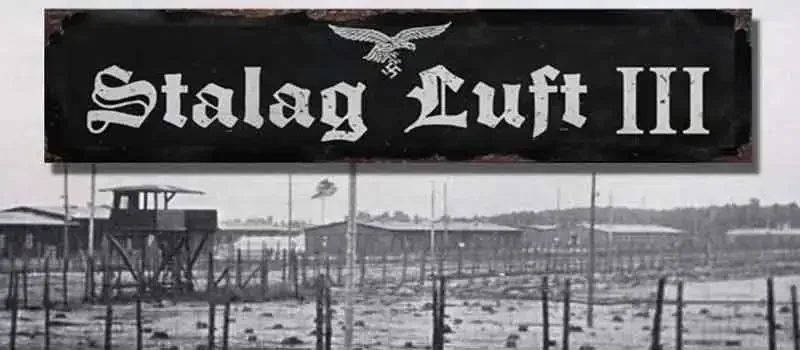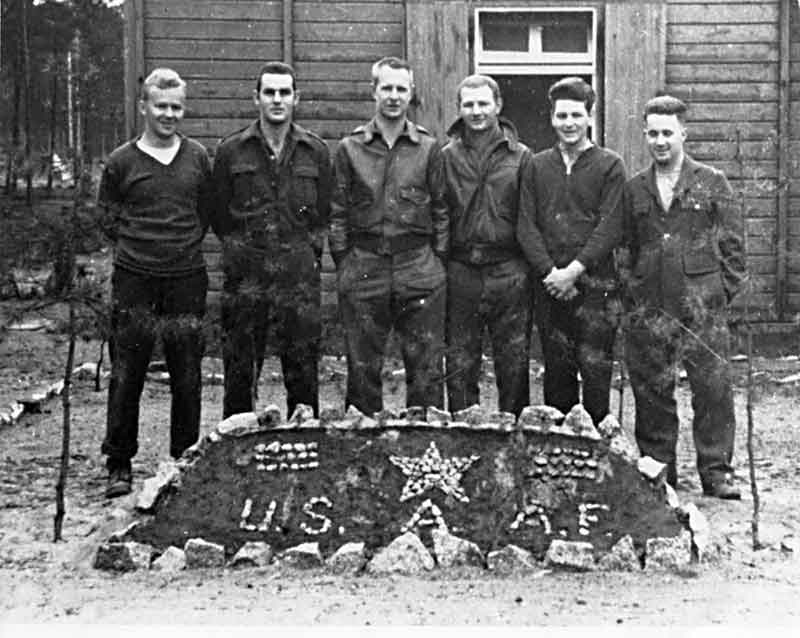- Military History
- Prisons, Prisoners & Camps
- POW Camps
- Stalag Luft 3 - Stammlager Luft III (1942)

Stalag Luft 3 - Stammlager Luft III (1942) The largest and most famous prison camp for Allied airmen in World War II
Stalag Luft 3, near the town of Sagan in the German province of Silesia, became the largest and most famous prison camp for Allied airmen in World War II. It was opened in April 1942, after the Luftwaffe decided that all captured airmen should be confined in a single camp. In its original incarnation, Stalag Luft 3 comprised two compounds: East, which held some 500 officers, and Center, housing roughly 1,000 noncommissioned officers.
These compounds and all subsequent additions were of a standardized construction: prefabricated wooden huts, a cement punishment block, double barbed-wire fences, and guard towers around the perimeter. From these humble beginnings, Stalag Luft 3 soon grew. The populations of East and Center nearly doubled, and new compounds were added: North, for officers, in April 1943; South, for American officers, in September 1943; an auxiliary camp at Belaria, in January 1944; and West, also for Americans, in March 1944. At its peak, well over 10,000 Allied airmen lived in Stalag Luft 3.

The camp boasted a wide range of amenities intended to make captivity more bearable: a fully equipped theater, several orchestras, a library and educational program, sports teams, and religious services. In addition, Stalag Luft 3, especially East, Center, and North Compounds, was a hive of escape activity. The Wooden Horse escape of October 1943 and the Great Escape of March 1944 both occurred at Sagan, and the NCOs of the Center compound were also very active. Literally hundreds of tunnels (most of them abortive) were dug in Stalag Luft 3, and hundreds of escapers got away from the camp; dozens reached the safety of neutral territory.
Because of the camp's location in eastern Germany, it was vulnerable to the advance of the Soviet army and in January 1945, the commandant announced that Stalag Luft 3 would be evacuated. Beginning on 28 January 1945, the compounds were emptied of prisoners, who were formed up in ranks and marched west to a nearby railroad. The columns went in different directions: most of the Americans were taken to southern Germany, the prisoners of East and Belaria were moved to a camp near Berlin, and the inmates of North traveled to Lubeck, in northwest Germany. Despite fears that the Nazis would execute the inmates of Stalag Luft 3, most of the POWs survived the forced marches to be liberated in April and May 1945.
A small museum has been erected near Sagan (now Zagan in western Poland), and the foundations of some of the camp's buildings are still visible in the undergrowth that has taken over the camp site.
- Germany Nazi (1933-1945)
- Poland (since 1918)
Map
- {{#owner}}
- {{#url}} {{#avatarSrc}}
{{name}} {{/url}} {{^url}} {{#avatar}} {{& avatar}} {{/avatar}} {{name}} {{/url}} - {{/owner}} {{#created}}
- {{created}} {{/created}}
























